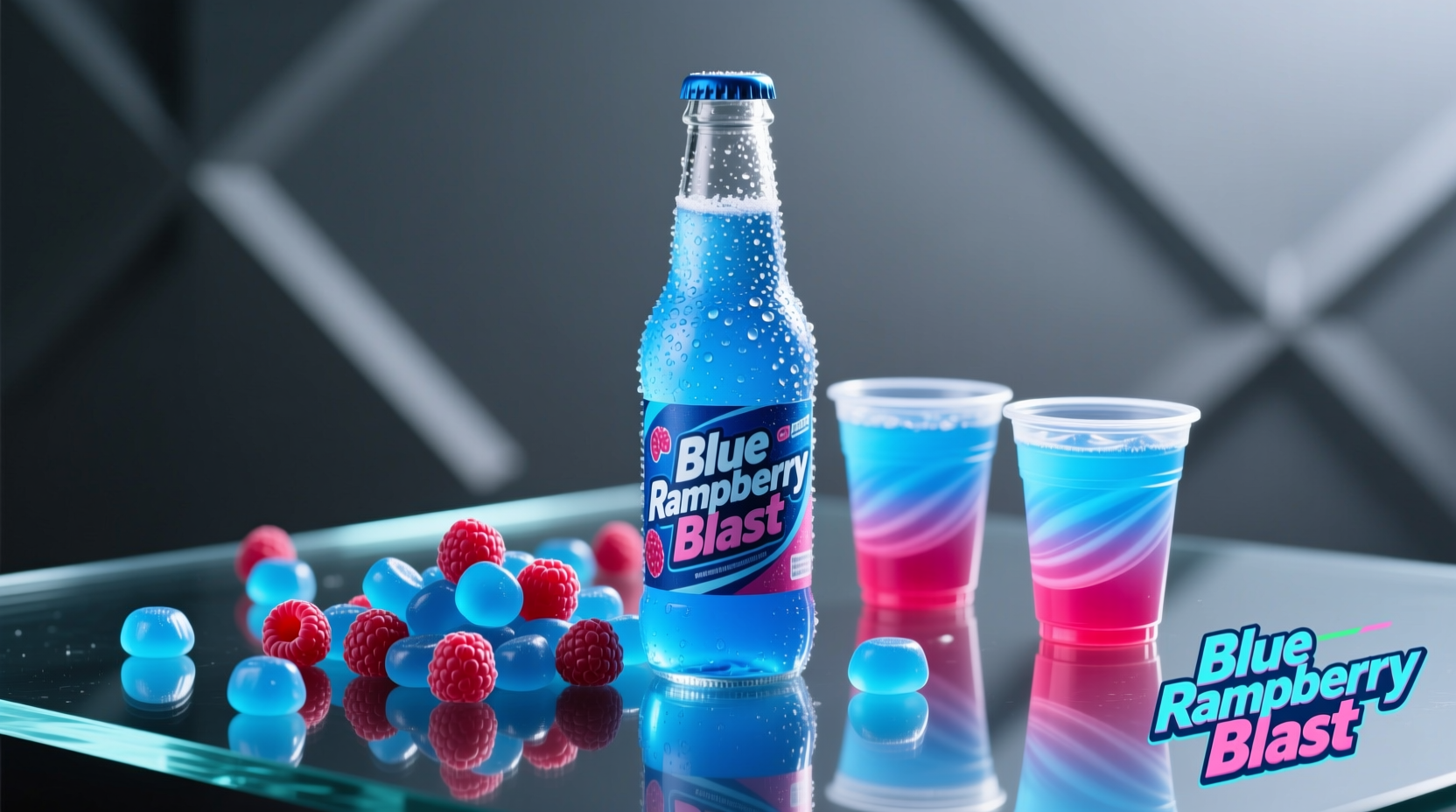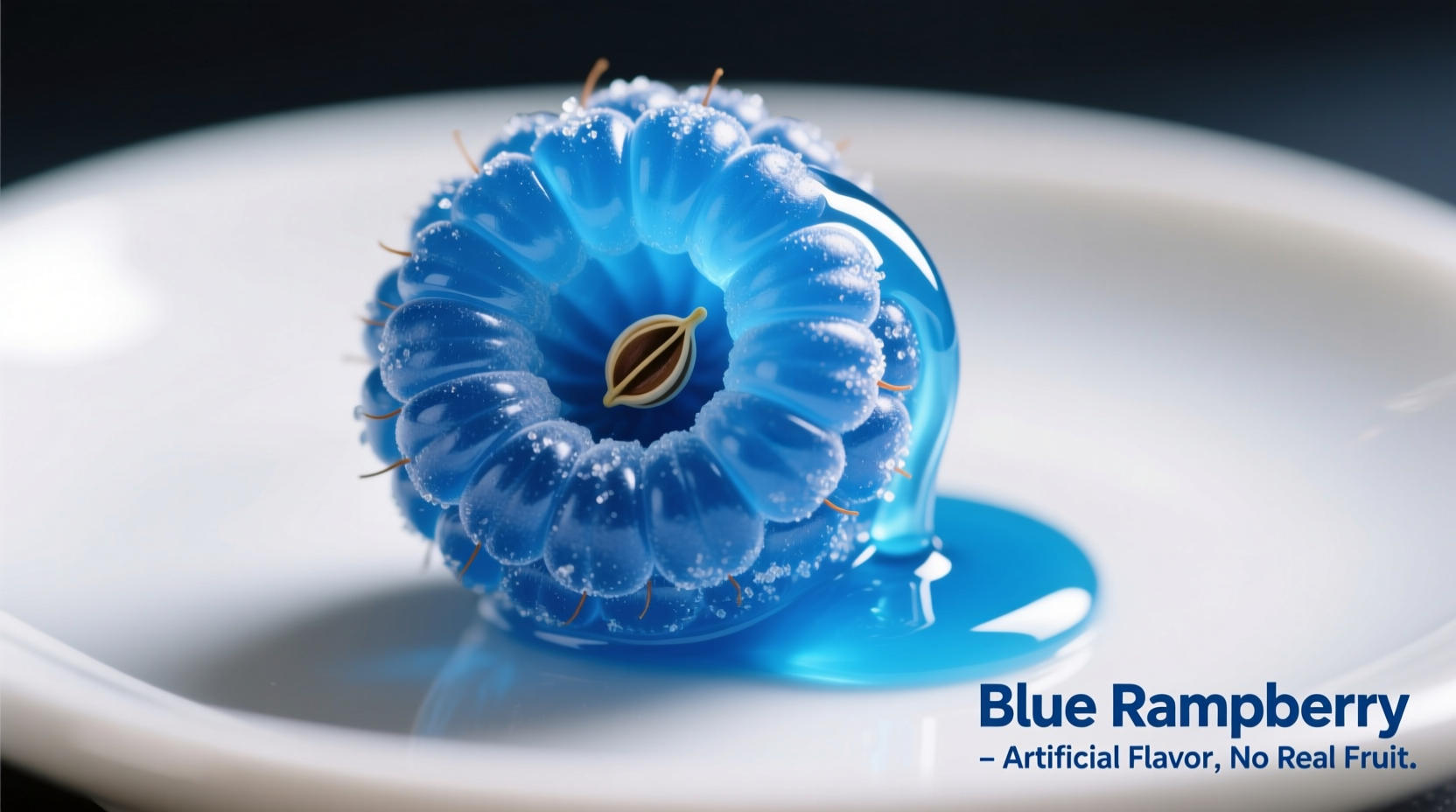Have you ever wondered why raspberry-flavored products are often bright blue when real raspberries are red? You're not alone. This common confusion stems from a fascinating intersection of food science, marketing, and consumer psychology that transformed how we experience artificial flavors. Understanding what blue raspberry actually tastes like—and why it looks nothing like real raspberries—can help you make more informed choices about the foods and beverages you consume.
The Reality Behind Blue Raspberry Flavor
Despite its name, blue raspberry doesn't correspond to any actual fruit found in nature. The flavor was invented in the 1970s as a solution to a practical problem: when creating multiple fruit-flavored products, manufacturers needed distinct colors for each flavor. Since red was already used for cherry and strawberry, raspberry needed a different color to stand out on shelves and in product lines.
Food scientists developed a flavor profile that combined raspberry notes with hints of other berries and tropical fruits, then paired it with a vibrant blue color using artificial dyes like Brilliant Blue FCF (FD&C Blue No. 1). This created a unique sensory experience that became instantly recognizable to consumers.
What Blue Raspberry Actually Tastes Like
Blue raspberry flavor typically features:
- A sweet, candy-like base with moderate tartness
- Raspberry notes blended with cherry and banana undertones
- Subtle tropical hints reminiscent of pineapple or mango
- A cleaner, brighter profile than natural raspberry
- Less earthy and complex than real raspberry
According to flavor chemists at the Institute of Food Technologists, blue raspberry flavor commonly contains ethyl methylphenylglycidate (EMPG) for raspberry notes, combined with esters that provide tropical fruit characteristics. This creates a flavor profile that's more intense and consistent than natural raspberry, which varies by season and growing conditions.

Evolution of Blue Raspberry Flavor
The development of blue raspberry follows an interesting timeline:
- 1970s: Created for slushie machines to differentiate from red cherry flavors
- 1980s: Gained popularity in candies and chewing gum
- 1990s: Expanded to sports drinks and frozen treats
- 2000s: Became standard in children's products due to its vibrant color
- Today: Used in over 200 food and beverage categories worldwide
This evolution demonstrates how a practical solution to a color differentiation problem became a globally recognized flavor profile. The FDA's guidance on food coloring (21 CFR § 74.101) helped standardize the blue color while flavor manufacturers developed consistent taste profiles.
Blue Raspberry vs. Real Raspberry
| Characteristic | Blue Raspberry Flavor | Natural Raspberry |
|---|---|---|
| Color | Bright blue | Red to deep purple |
| Taste Profile | Sweet, candy-like, tropical notes | Balanced sweet-tart, earthy, complex |
| Natural Source | Artificial flavor compounds | Rubus idaeus fruit |
| Common Products | Slushies, candies, sports drinks | Jams, desserts, fresh consumption |
Where You'll Find Blue Raspberry Flavor
Blue raspberry flavor has become ubiquitous in certain product categories:
Beverages: Slushies, sports drinks, and energy drinks use blue raspberry for its vibrant color and consistent flavor. Brands like ICEE and Slurpee popularized this combination, with blue raspberry becoming one of their top-selling flavors.
Candies: From lollipops to gummy bears, blue raspberry provides a distinctive flavor that stands out in multi-flavor packs. The Food and Drug Administration's regulations on artificial flavors (21 CFR § 172.515) ensure these products meet safety standards while maintaining consistent taste.
Frozen Treats: Popsicles and snow cones frequently feature blue raspberry as a separate flavor from regular raspberry, helping children distinguish between similar-tasting options.
Consumer Perception of Blue Raspberry
Market research from the International Food Information Council shows interesting patterns in how consumers perceive blue raspberry:
- 78% of consumers aged 25-44 recognize blue raspberry as a distinct flavor
- Only 32% correctly identify that it doesn't correspond to a real fruit
- Gen Z consumers show 23% higher preference for blue raspberry over natural raspberry flavors
- 65% associate the flavor with childhood treats and positive memories
This sentiment analysis reveals how effective marketing has created a strong association between the blue color and a specific flavor experience, despite its lack of botanical basis. The psychological impact of color on flavor perception, documented in studies published in the Journal of Food Science, explains why this artificial combination has remained popular for decades.
Making Informed Choices About Blue Raspberry Products
When selecting products with blue raspberry flavor, consider these practical tips:
- Check ingredient labels for "artificial flavors" and "FD&C Blue No. 1" to identify authentic blue raspberry products
- Products labeled "raspberry" without the "blue" modifier typically contain natural raspberry flavor
- "Blueberry" and "blue raspberry" are completely different flavors—don't confuse them
- Organic products won't contain artificial blue coloring, so true blue raspberry flavor won't appear in certified organic items
- For natural alternatives, look for products specifying "raspberry and blueberry" flavors
Understanding these distinctions helps you navigate the complex world of food labeling and make choices aligned with your preferences for natural versus artificial ingredients.
Is blue raspberry flavor made from real raspberries?
No, blue raspberry flavor is not made from real raspberries. It's an artificial flavor combination designed to evoke raspberry notes while using blue coloring for product differentiation. The flavor typically blends raspberry with other berry and tropical fruit notes.
Why is blue raspberry blue when raspberries are red?
Blue raspberry is blue because food manufacturers needed a distinct color for raspberry-flavored products when red was already used for cherry and strawberry flavors. The bright blue color helped products stand out on shelves and in multi-flavor product lines.
What does blue raspberry actually taste like?
Blue raspberry typically tastes like a sweet, candy-like combination of raspberry, cherry, and tropical fruit notes with moderate tartness. It's brighter and less complex than natural raspberry, with distinctive banana or pineapple undertones that differentiate it from real raspberry flavor.
Is blue raspberry flavor safe to consume?
Yes, blue raspberry flavor is safe to consume when used within regulatory limits. The artificial colors (like FD&C Blue No. 1) and flavor compounds used in blue raspberry products have been evaluated by the FDA and other food safety authorities worldwide and approved for consumption.











 浙公网安备
33010002000092号
浙公网安备
33010002000092号 浙B2-20120091-4
浙B2-20120091-4